How to Grow Cilantro Microgreens
I just discovered something new and delicious to eat - Cilantro microgreens! Now I'm sowing cilantro to harvest the shoots and small leaves. It's tasty, spicy, and easy to grow indoors during the winter and early spring.
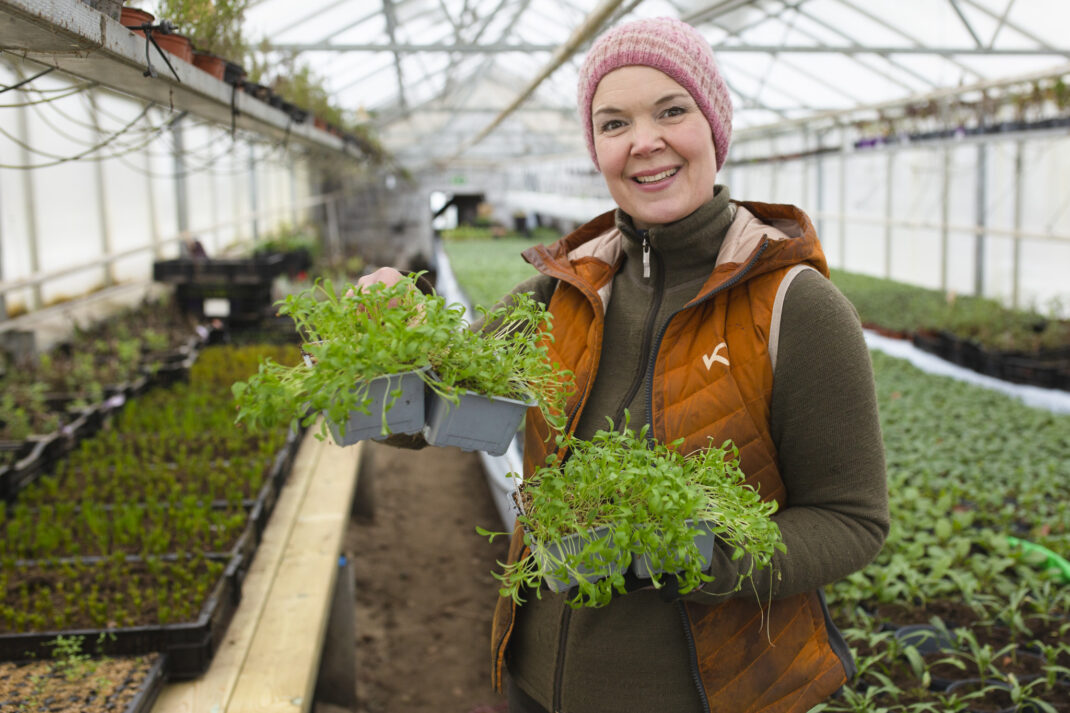
Look at these lovely cilantro microgreens! Photo: Ida Sjöö.
Lately, I've been a bit obsessed with cilantro. But not the large and lush cilantro that you can buy in the grocery store. No, I've developed a special interest in new, tiny little cilantro leaves from my own broadcast sowings. It's so delicious! As a few of you might know, I have my own flower farm and nursery. I've been growing plenty of cilantro there and one of the winter sowings has developed beautifully. Despite that, my customers haven't exactly flocked to get their hands on my tasty cilantro leaves. So, I'm eating them all myself. And what amazingly tasty microgreens they are! I definitely recommend that you try growing cilantro microgreens at home.
Read more: Growing vegetables indoors - what temperature?
Last summer, I tried growing cilantro from seed in the garden, to see if I could come to truly enjoy this somewhat polarizing herb. A lot of people have a love-hate relationship with this plant. They either adore it or despise it with a passion. My whole family belongs to the latter category. I do however like the taste but find it hard to use the herb in my cooking since the family doesn't approve. Even if haven't used cilantro very often in my cooking, I've enjoyed growing it every now and then over the years. Mainly to keep the seeds and use them to make my mother's lovely cilantro cakes. So, I feel comfortable growing cilantro from seed the traditional way. This is a new way of growing it though, where the goal is to harvest the tiny shoots and leaves rather than the full-grown plant. Maybe this could work for you too?
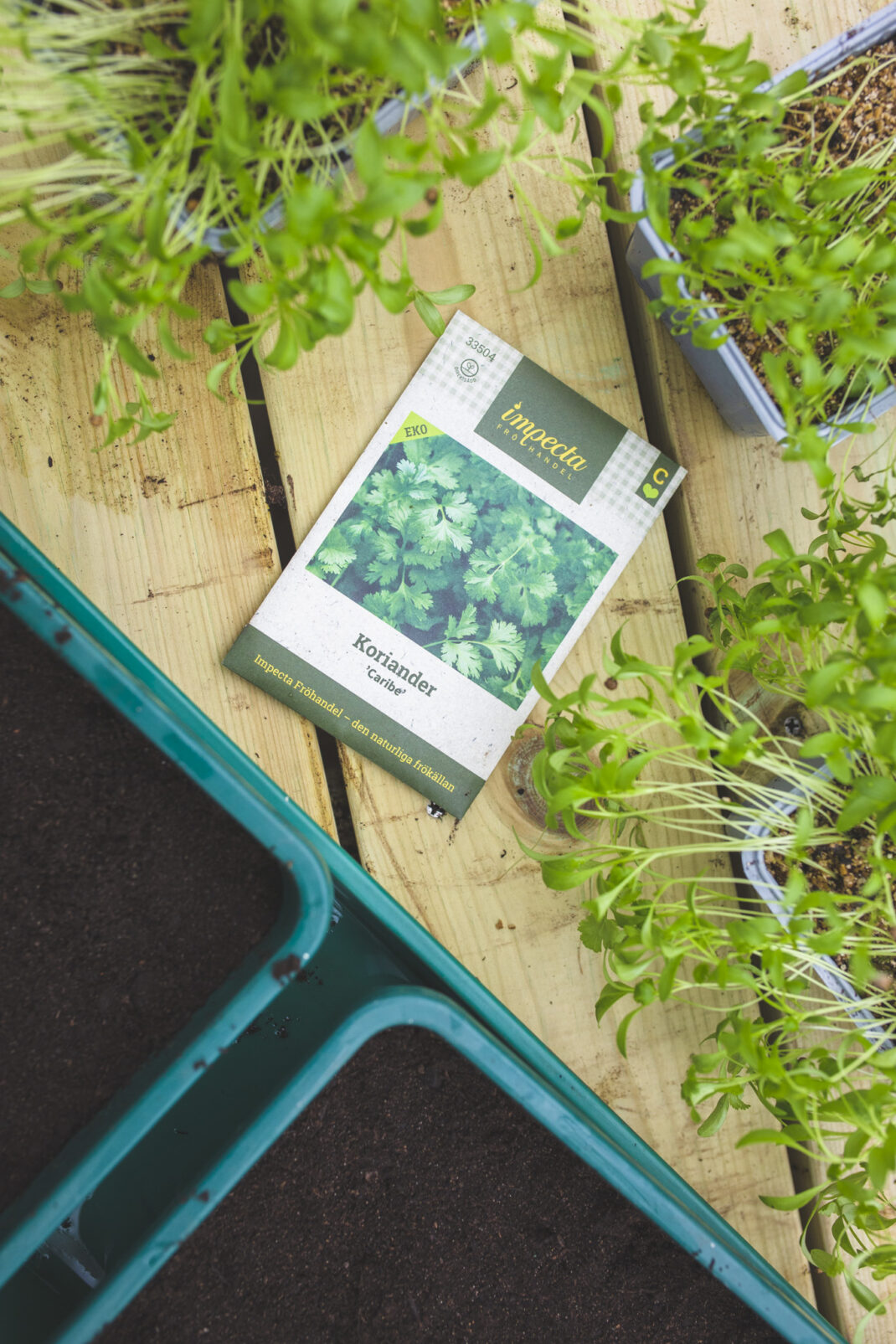
Phto: Ida Sjöö.
The Cilantro Microgreens
I can't stop gushing over these cilantro microgreens! One day, I cut a handful of these lovely little leaves and put them on an egg sandwich for lunch. And then I was hooked. The fresh little cilantro microgreens were much milder and more delicious than the fully-grown plants from the supermarket. Nowadays, I put them on almost everything. A big plus is of course that nobody else in my family enjoys them, so I can keep them all to myself. If you enjoy cilantro even a little bit (or if you want to learn how to enjoy it), then you should go for cilantro microgreens.
Read more: Cream cheese with spring herbs
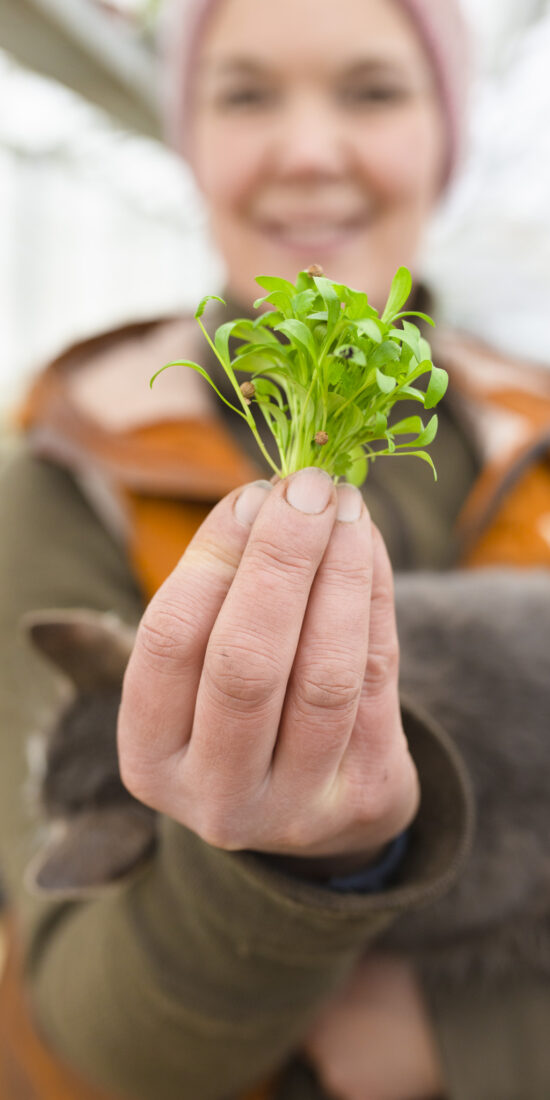
Foto: Ida Sjöö.
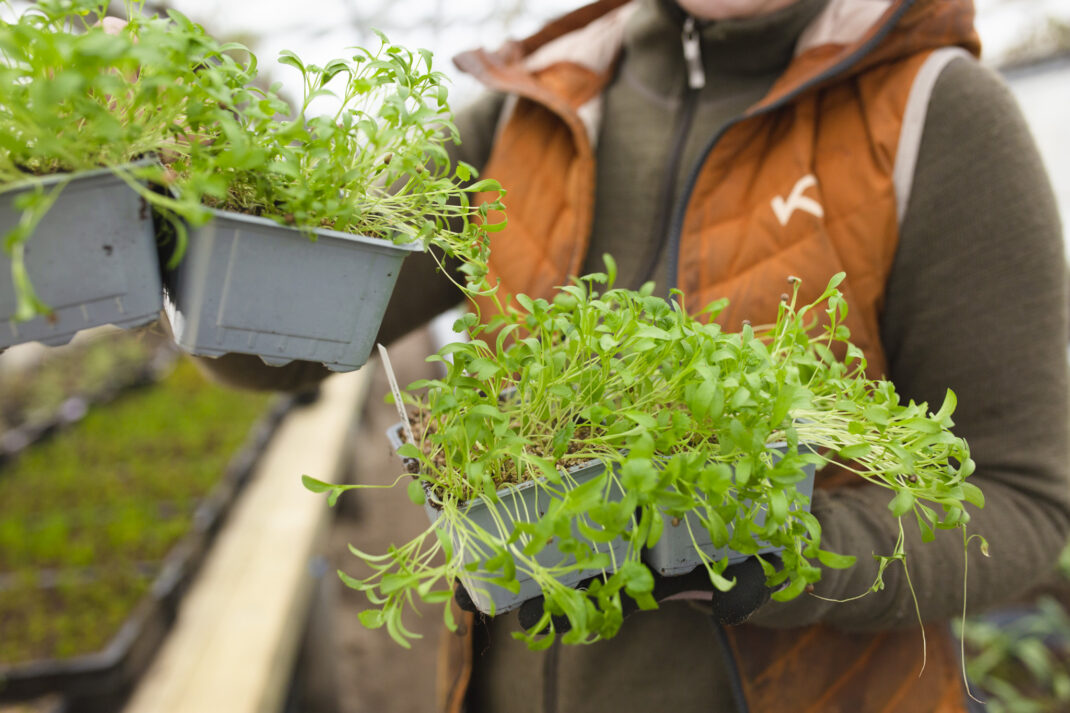
Photo: Ida Sjöö.
CILANTRO
Cilantro is an annual herb. You can use the leaves, stems and seeds for your cooking. The leaves grow similarly to parsley, and have a very distinct flavor. Some people think that they taste like soap. The cilantro seeds however taste a little bit citrusy, like orange.
You can grow your cilantro in pots, but it also does well outside in your beds. Direct sow or pre-cultivate indoors and plant outside later. Cilantro will bolt early if it's hot outside. Try to grow it early in spring or in late summer to avoid this.
The cilantro I grow at Skillnaden's Flower Farm and Nursery was sown in practical little sowing containers, so that the customers can split them into clusters and put them in individual pots or in their beds outside. I do the same thing for my new broadcast-sowing, but my plan is to let the plants grow and then harvest it all right away. Luxurious and perhaps a bit wasteful since I get one big batch all at once. An alternative to this method is to first let the plants grow a bit, and harvest by cutting the leaves right above the next growth point. This way, the plant can start growing new leaves from those points.
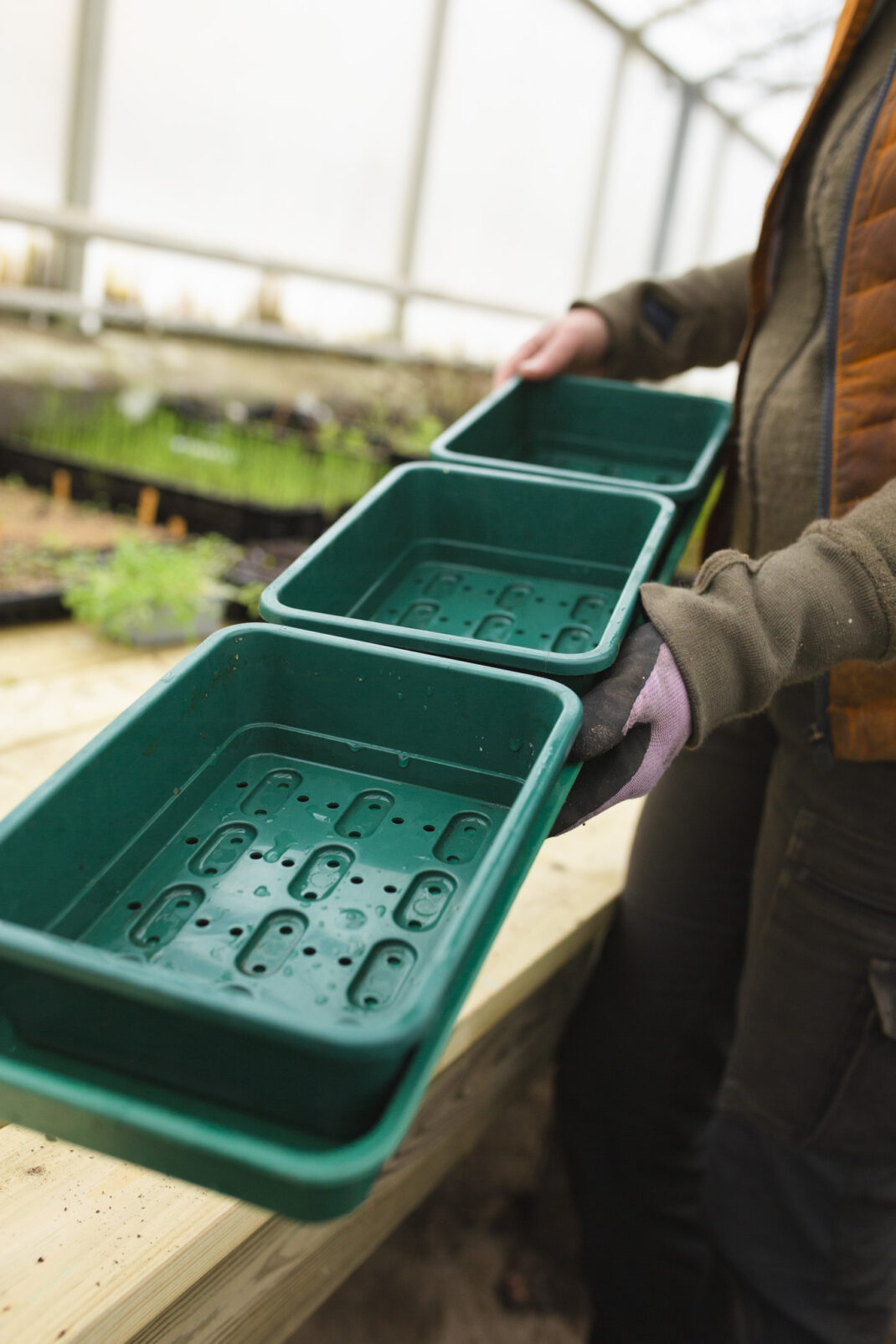
Photo: Ida Sjöö.
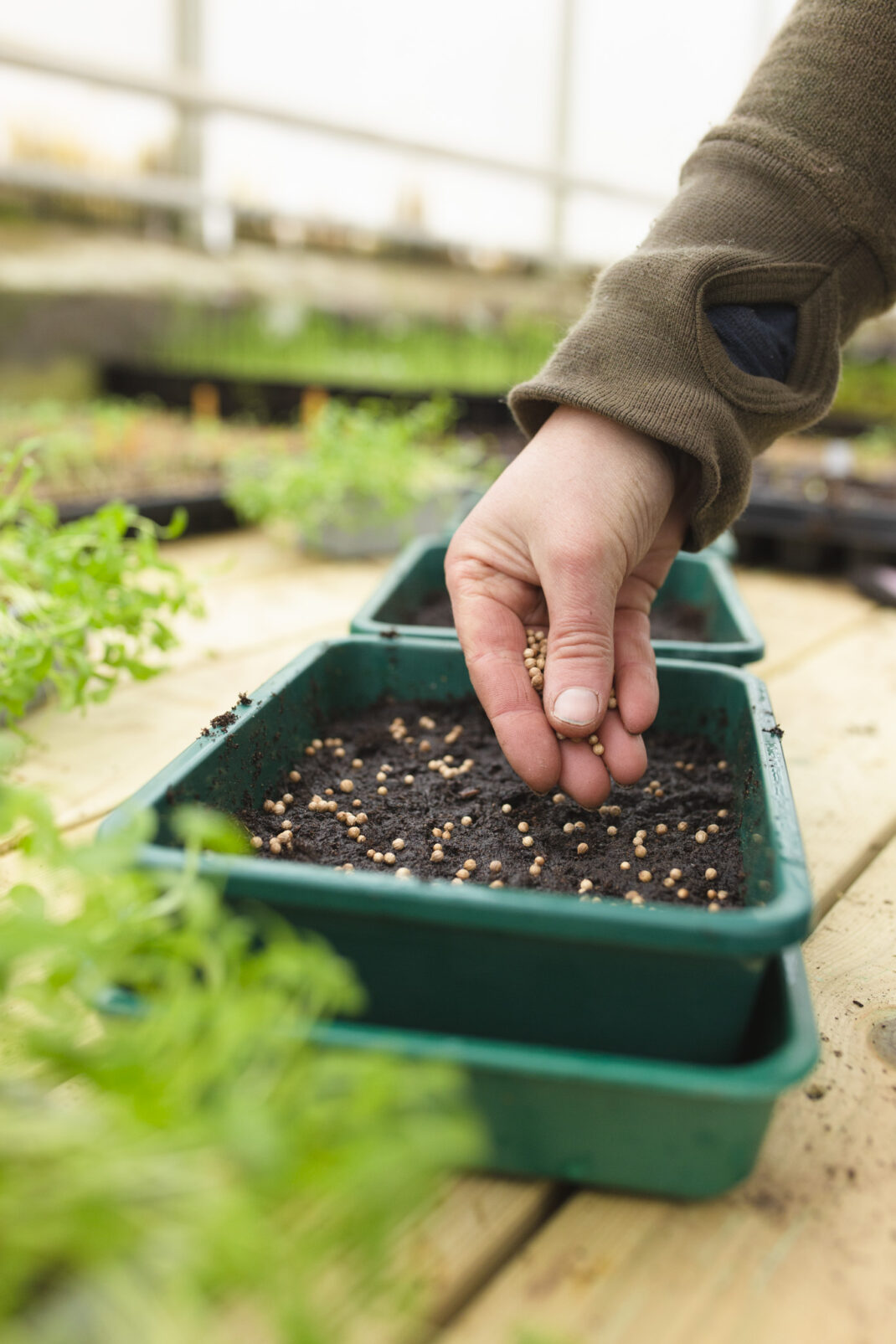
Photo: Ida Sjöö.
Broadcast-Sowing Cilantro
It's easy to get good results when you do a broadcast-sowing of cilantro seeds. Simply put a layer (around an inch or so) of regular planting soil in a low trough. Wet the soil and then scatter the cilantro seeds on the surface.
I use sturdy troughs from the brand Garland, one of my favorites because of the durability. They are not very wide either, and fit nicely in my window.
Cilantro seeds don't need very warm soil to grow. I usually keep my cilantro sowings in room temperature. The seeds won't go bad in colder soil though, the germination will just take a little longer. But if you want to grow compact shoots that will give you larger leaves, then I recommend that you put them somewhere cool and bright after they germinate. For example underneath a grow light. My idea was of course to grow cilantro microgreens that I can harvest quickly, so I don't want to give the prime spot under the grow light to them.
BROADCAST-SOWING
You can use this method of sowing for most plants. Simply scatter the seeds on top of the soil, quite closer together. This method will get you plenty of plants on a smaller area. Especially microgreens can grow in tighter clusters, since we don't plan on letting them grow large (when they need more space). Leafy greens and herbs are basically always grown with this method, but you can also use it for other crops like tomatoes, peppers, cabbage, lettuce and summer flowers.
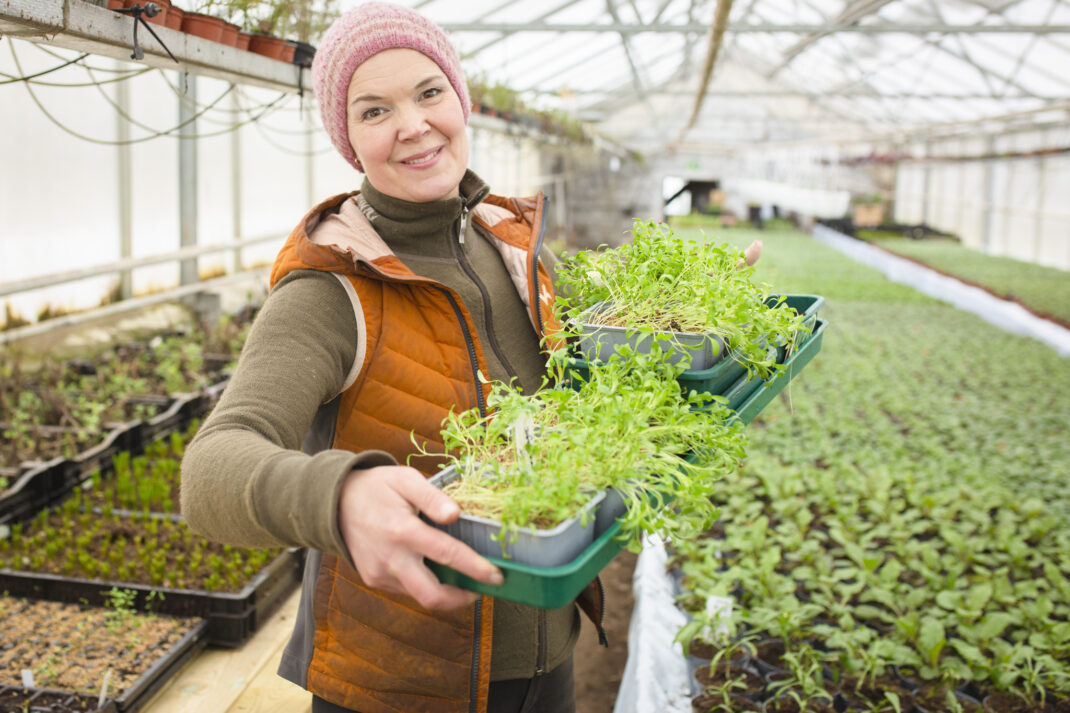
Photo: Ida Sjöö.
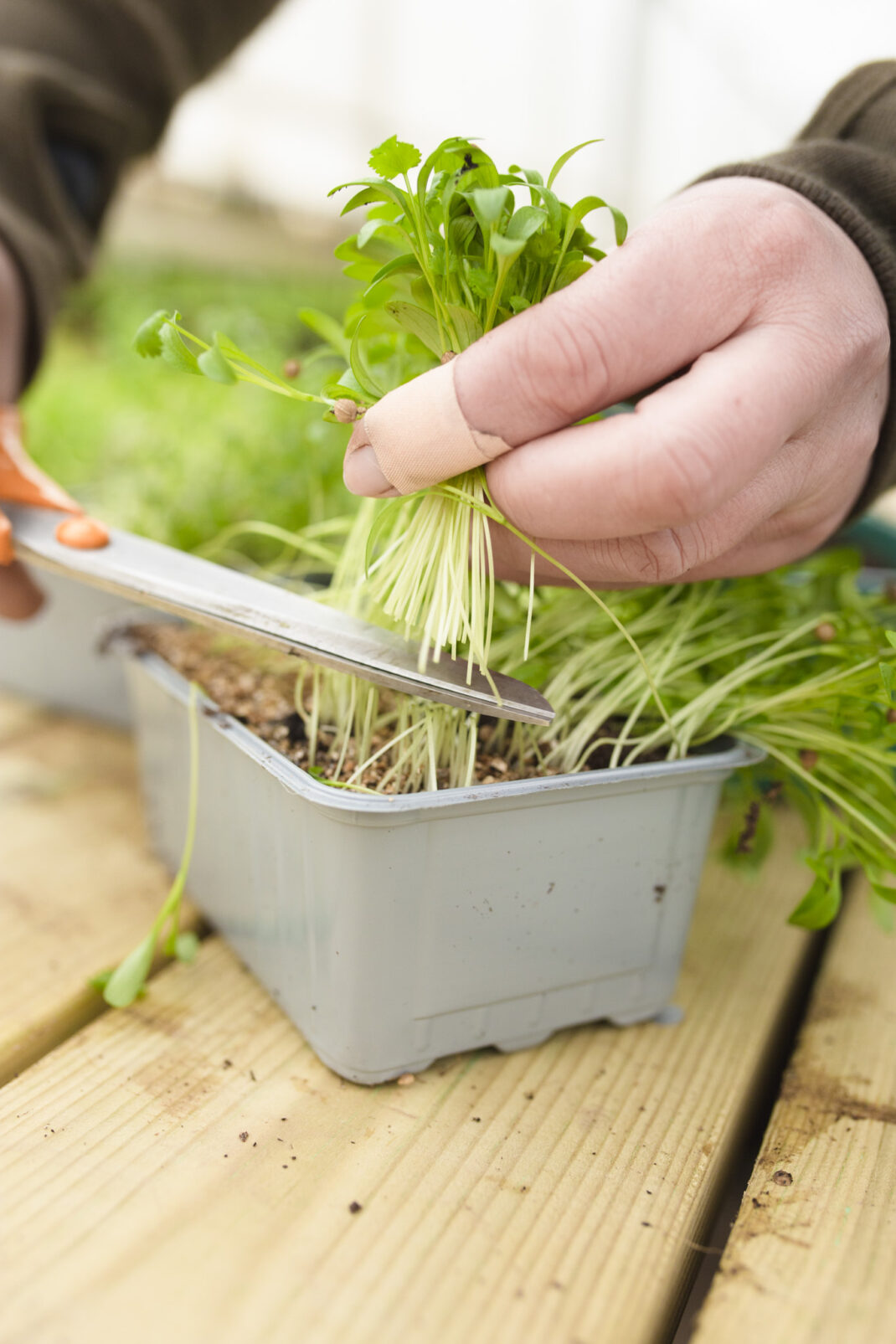
Photo: Ida Sjöö.
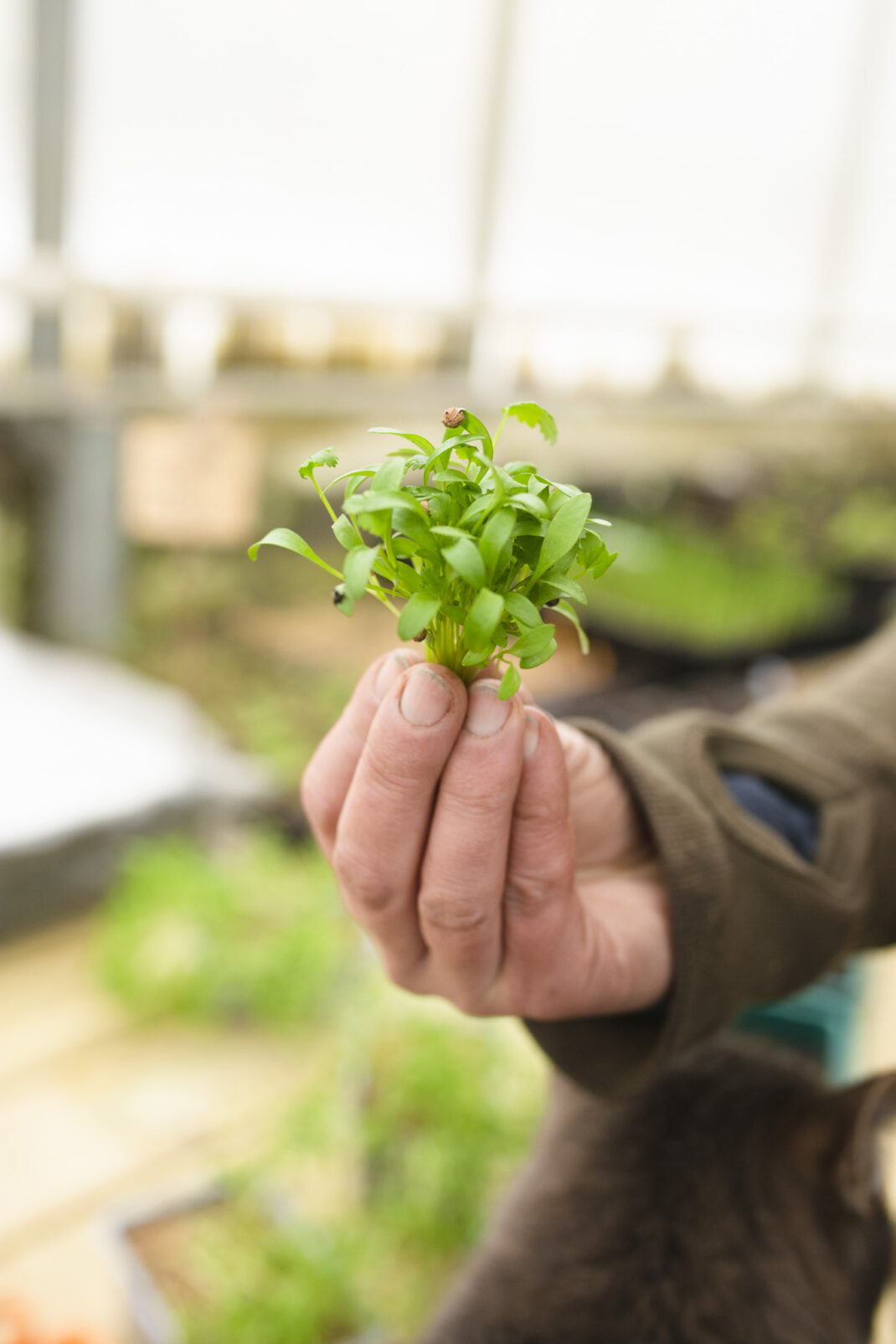
Photo: Ida Sjöö.
More: Follow me on YouTube
If you want to try growing cilantro microgreens, then I recommend looking for seeds on sale or seeds that are specifically meant for this purpose. The luxurious seeds I used for this sowing are actually meant for larger, potted cilantro. But this is what I had available at the moment.
Good luck with your cilantro! I hope that you enjoy these fresh little microgreens as much as I do.
/Sara at Skillnaden's
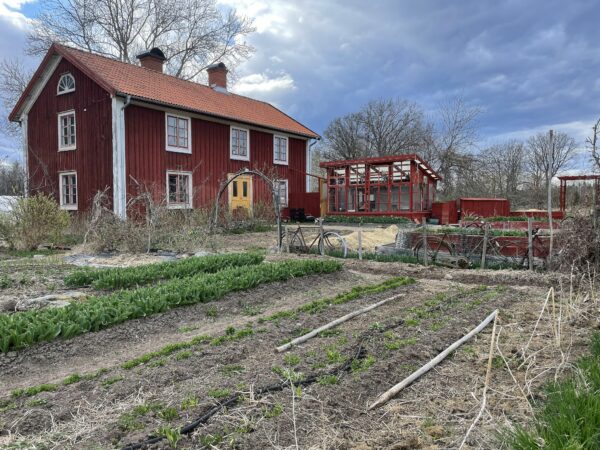
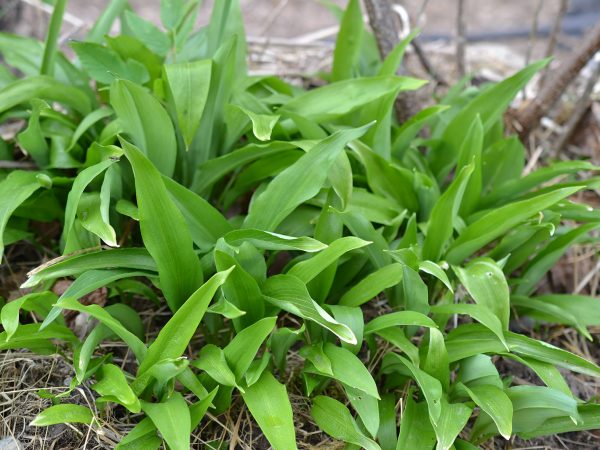
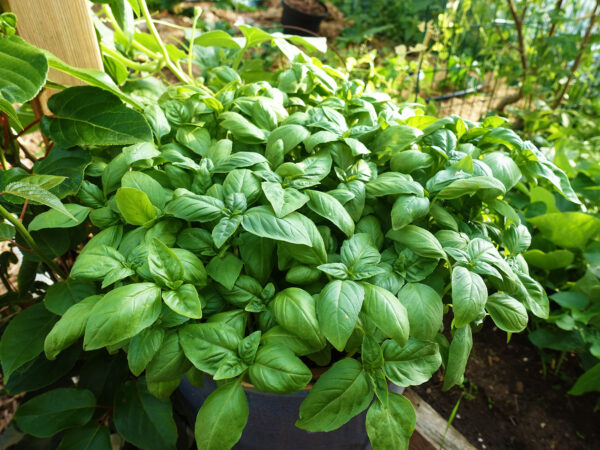
Leave a Reply